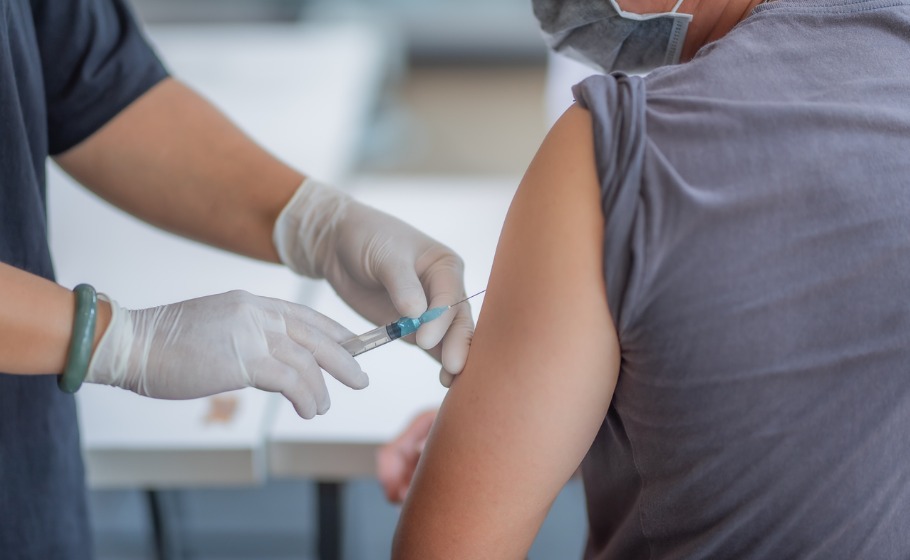
Are you worried after being vaccinated? Then you should read this
Bleeding and clotting cases following COVID vaccination in India are “minuscule and in line with the expected number of diagnoses” of these conditions in the country, a report submitted by the National AEFI (Adverse Event Following Immunization) Committee to the Ministry of Health & Family Welfare said.

Bleeding and clotting cases following COVID vaccination in India are “minuscule and in line with the expected number of diagnoses” of these conditions in the country, a report submitted by the National AEFI (Adverse Event Following Immunization) Committee to the Ministry of Health & Family Welfare said.
The Union government had ordered an in-depth analysis in India in the light of concerns being raised in some countries in March this year on post-vaccination “embolic and thrombotic events”, particularly with AstraZeneca-Oxford vaccine (which is available in India under the name Covishield).
Thrombotic events refer to the potentially fatal formation of a blood clot that could break loose and be carried by the blood stream to block another vessel.
The committee’s observations
The AEFI Committee review found 498 serious and severe events, of which 26 cases have been reported to be potential thromboembolic – following the administration of Covishield vaccine – with a reporting rate of 0.61 cases/ million doses. The report said it is far below the four cases per million doses reported by the United Kingdom’s health regulator, and the 10 cases per million doses reported by Germany.
Bharat Biotech’s Covaxin was found to be completely safe with “no potential thromboembolic events reported following administration of the vaccine”, the report found.
Also read: Mixing COVID vaccines can give you mild side effects, but not harmful: Study
The study observed vaccinations done between January 16 and April 3, 2021 and found that since the COVID-19 vaccination drive was initiated, more than 23,000 adverse events were reported through the CO-WIN platform in 684 districts of the country. Of these, only 700 cases (@ 9.3 cases /million doses administered) were reported to be serious and severe nature.
During this period, 75,435,381 vaccine doses had been administered (Covishield – 68,650,819; Covaxin – 6,784,562). Of these, 65,944,106 were first doses and 9,491,275 second dose.
What led to the investigation?
Countries like Denmark, Venezuela and Indonesia halted Astra Zeneca vaccination in March this year after reporting “adverse events” and even death, which was attributed to a rare clotting disorder.
The European Medicines Agency conducted an inquiry and found the vaccine ” safe and effective”, but said it “cannot definitively rule out” a link to the rare clotting disorder. Meanwhile, the World Health Organization supported vaccination, arguing that “it was better to take the vaccine than not”.
Also read: What India needs for its people, economy: COVID vaccines, in quick time
Meanwhile, a study by Denmark and Norway scientists, published in the British Medical Journal in April, found slightly increased rates of vein blood clots. However, the scientists concluded saying theirs was a purely observational study, and so cause could not be established.
It is important to know that thromboembolic events keep occurring in general population as background and scientific literature suggests that this risk is almost 70 per cent less in persons of South and South East Asian descent in comparison to those from European descent.
Advisory for health workers
The Ministry of Health and Family Welfare has issued advisories to create awareness about suspected thromboembolic symptoms occurring within 20 days after receiving any COVID-19 vaccine (particularly Covishield). They are:
· breathlessness;
· pain in chest;
· pain in limbs/pain on pressing limbs or swelling in limbs (arm or calf);
· multiple, pinhead size red spots or bruising of skin in an area beyond the injection site;
· persistent abdominal pain with or without vomiting;
· seizures in the absence of previous history of seizures with or without vomiting;
· severe and persistent headache with or without vomiting (in the absence of previous history of migraine or chronic headache);
· weakness/paralysis of limbs or any particular side or part of the body (including face);
· persistent vomiting without any obvious reason;
· blurred vision or pain in eyes or having double vision;
· change in mental status or having confusion or depressed level of consciousness
· Any other symptom or health condition which is of concern to the recipient or the family


